-
Car Reviews
- All reviews
- Midsize SUVs
- Small cars
- Utes
- Small SUVs
- Large SUVs
- Large cars
- Sports SUVs
- Sports cars
- Vans
Latest reviews
- Car News
-
Car Comparisons
Latest comparisons
- Chasing Deals
We get behind the wheel of the original WRX STI that forged an icon. Does it live up to the hero-worship hype?
Heroism in vehicle form is an idea that’s easy to dream of, harder to make and almost impossible to turn into a legend – let alone trying to do so at a relatively attainable price.
Subaru wasn’t the first to break ground here, but it has arguably left the greatest impression and nowhere is that more true than across our wide brown land.
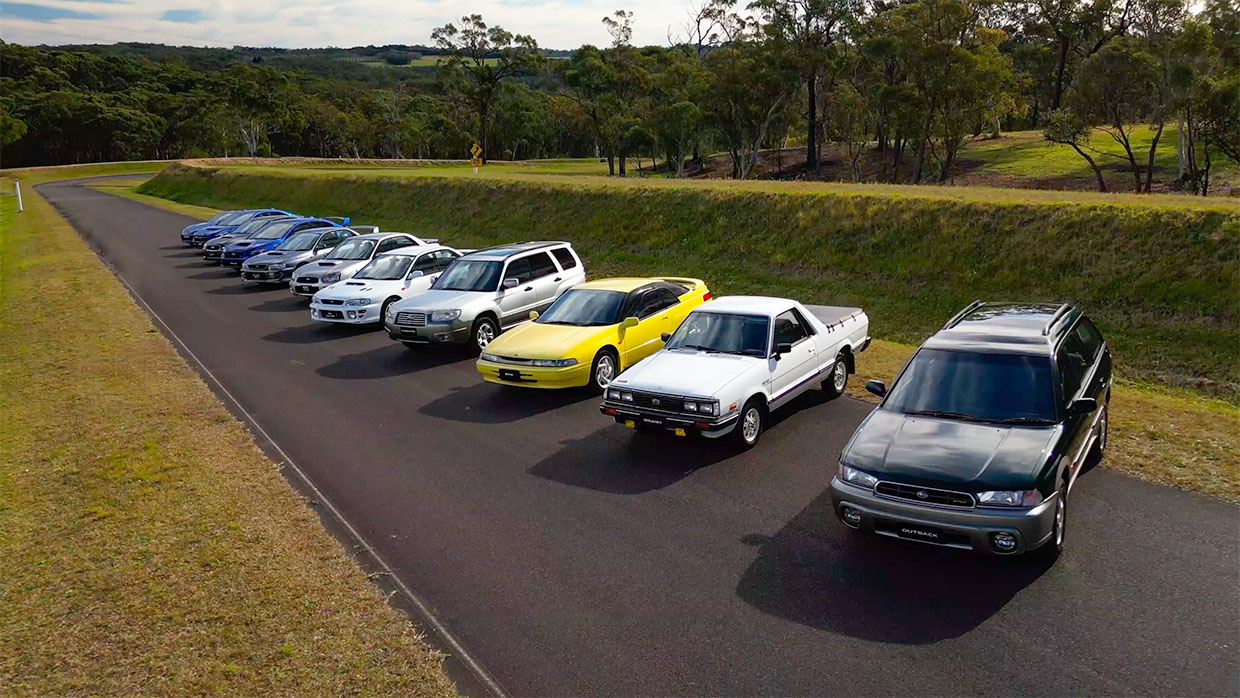
This year, 2023, marks the 50th year the brand has spent in Australia, a small market that shares more in common with Subaru’s homeland in Japan than just driving on the correct side of the road.
To celebrate the occasion, Subaru has taken some of its most famous cars out of hiding, many of which had less than 1000km of adventure on their odometers, dating as far back as the 1990 Subaru Brumby all the way to the brand-new BRZ and WRX.
We also sampled the technological showcase that is the 99 SVX coupe, a 07 Forester SUV with 200K on the clock, a locally tuned ‘blob eye’ WRX, likely the last ‘true’ WRX STI in 2021 form, along with a first generation WRX STI from the year 2000.
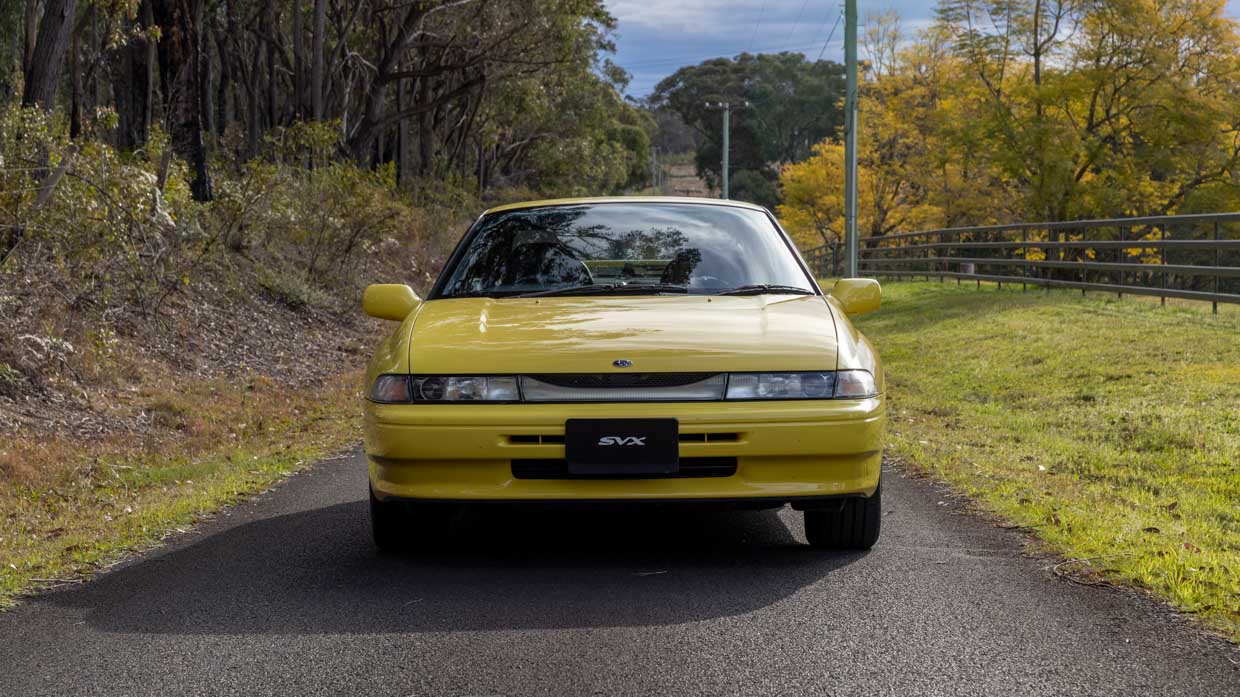
A one-owner first-generation Outback was also planned for the drive but sadly it dropped out, as did a first-gen WRX with just over 500km on the clock, thanks to technical issues which aren’t uncommon for cars of this age, especially performance vehicles.
On display but with the keys well-hidden were more chapters of the brand, from a running and driving example of Subaru’s first car in the 360, to the Leone sedan, a rally-spec WRX and a range of two-door STIs including one of five Australian delivered 22Bs.
The celebration was held on a private road on a 200-acre block most of you may know as ‘The Farm’ but now referred to as 70North under its new owner. With 29 corners across a grippy five-kilometre course, it feels similar to a Targa stage. It’s territory that’s quite familiar to Subarus.
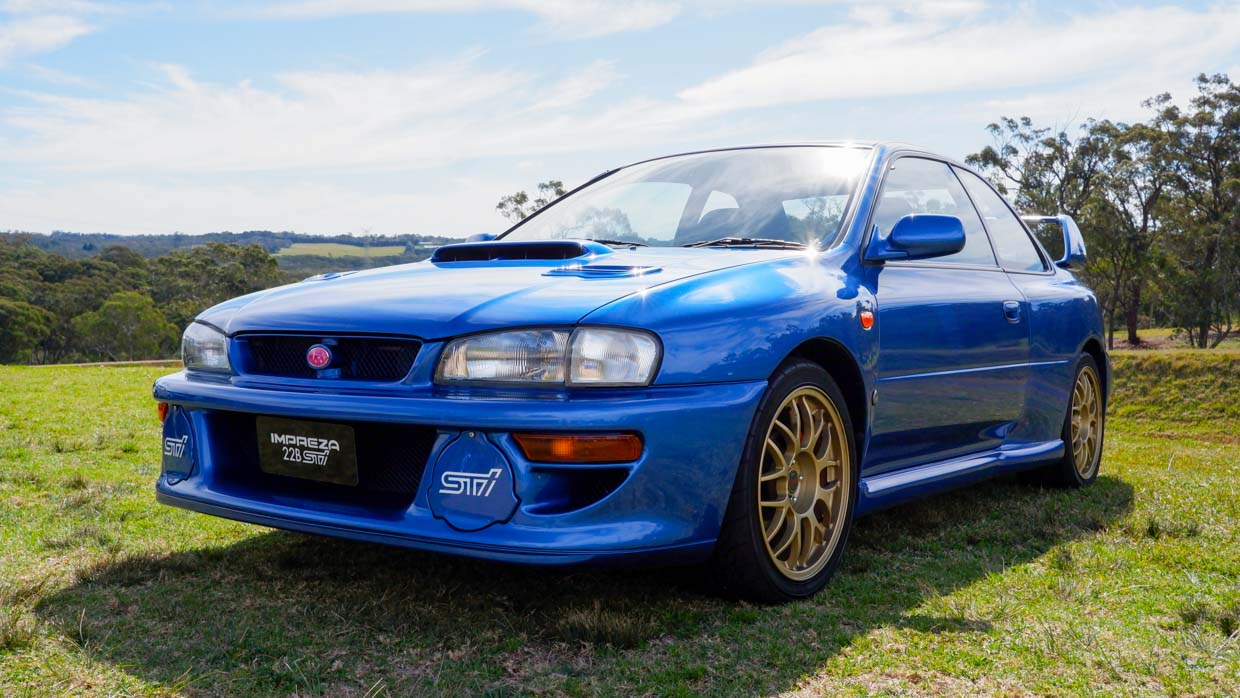
Some have remarked that Subaru has lost its way in the last 50 years with a more ‘passive’ persona taking the lead over time from its Colin McRae and 22B-esque days, but is that really true?
That requires further investigation, and where else better to look than in Subaru’s most iconic performance car.
The first-generation Impreza made its debut in 1992 and by August 1993 it looked to continue the rally legend of the six-star Japanese brand with its WRC debut in Finland, gradually gaining momentum before taking successive championships in ’95, ’96 and ’97.
People often lament the days when race cars had more in common with their road car equivalent and the WRX was a testament of this, if perhaps in a less psychopathic state of tune.
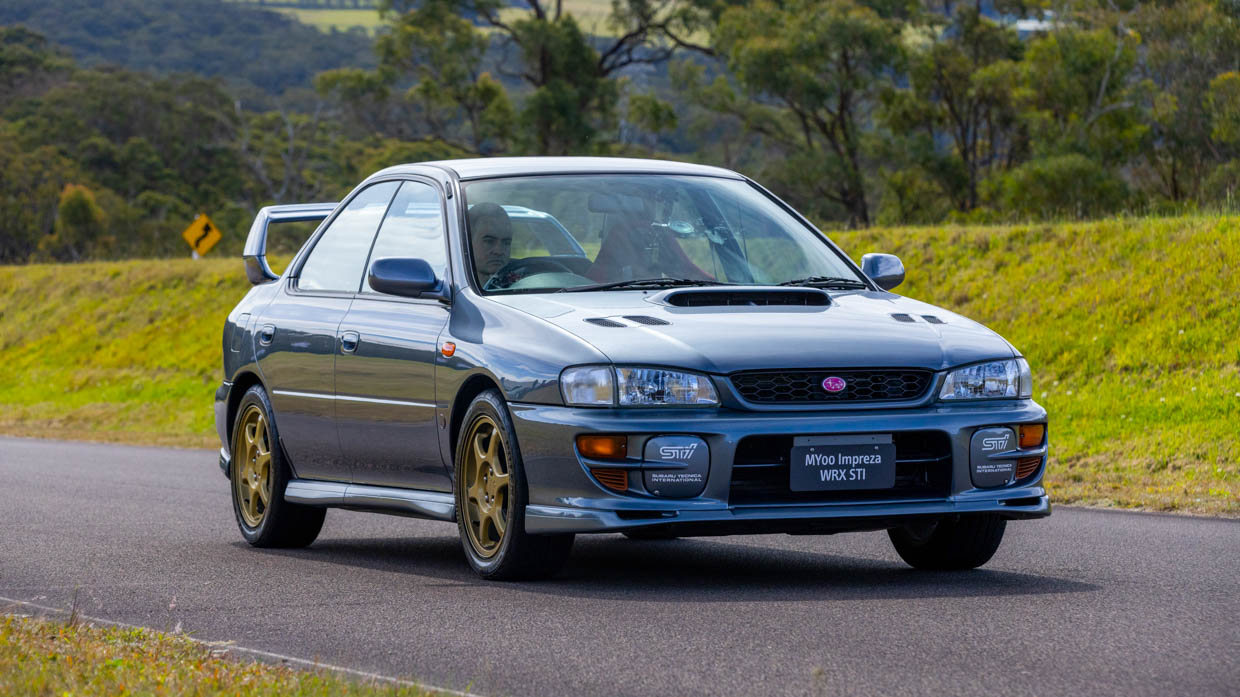
Merit aside, however, the focus of this gen was ‘bang for your buck’ and, while no stranger to some seriously up there price tags over the years, the core models still remain affordable.
The example in front of me is a 2000 Subaru WRX STI Version VI, the very last of this generation before the ‘bug-eye’ second-generation wholesale revamp arrived. A plaque inside the interior indicated this was vehicle 001 of the 400 four-door variants brought to Australia.
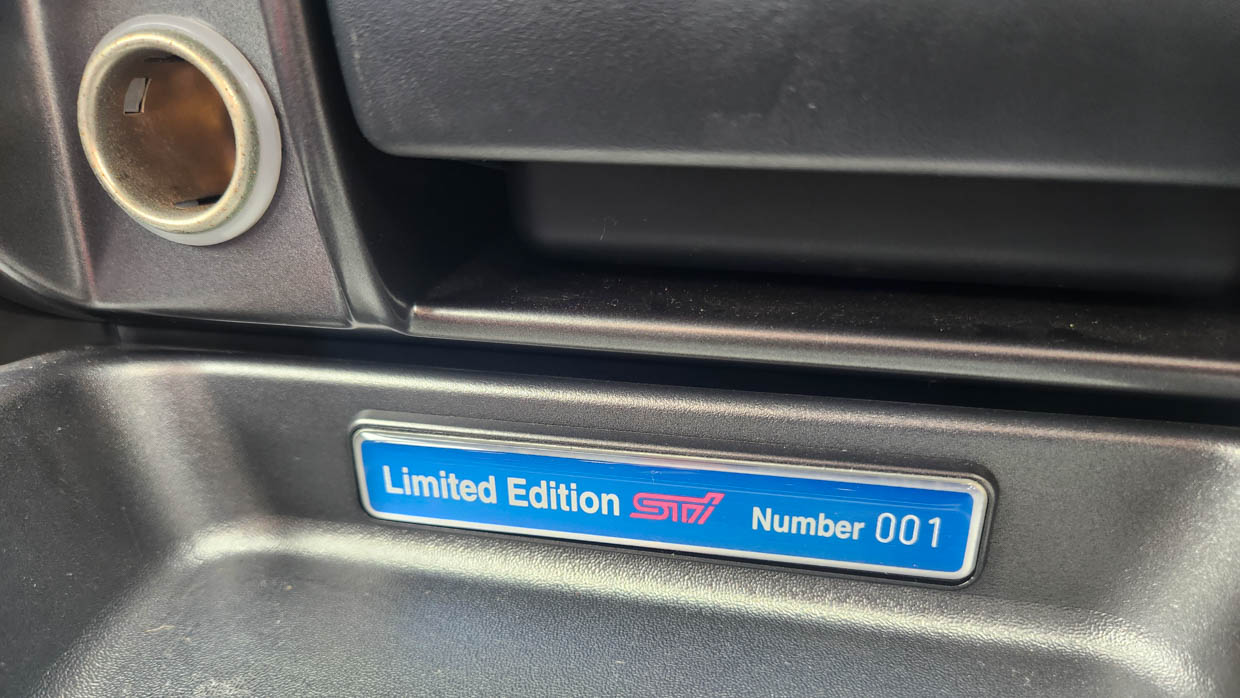
Remember what I said about WRXs being affordable? Yeah, not this one.
The original press release quotes a price of $62,500 before on-road costs, which is roughly $117,000 in today’s money. And yet many would certainly pay that today for a box-fresh STI like this one.
For content, a regular WRX was closer to $39,990, or around $85K in today’s money.
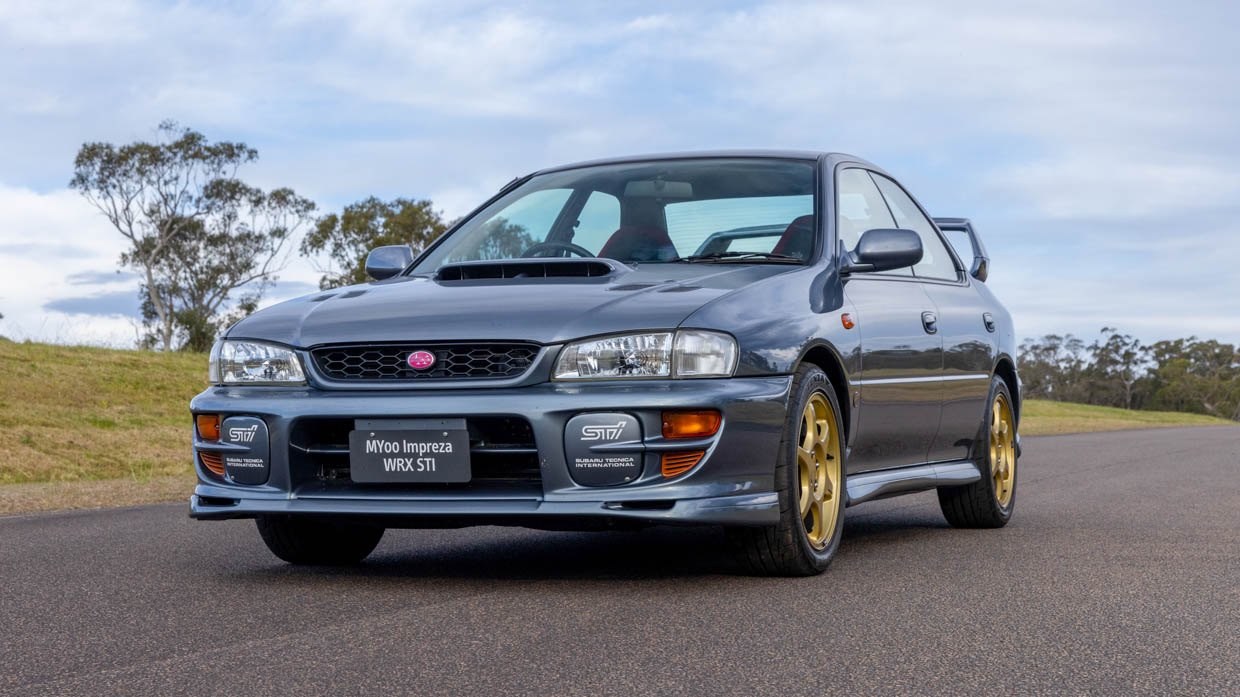
Around the time this menacing machine rolled off the production line I was busy jamming dinosaurs inside my mother’s VCR, and while I’ve sampled many Subarus over the years this is my first time driving a first-generation Impreza.
Subaru WRXs have a reputation for being driven quite enthusiastically – at all times – but maintained with far less passion and attention to detail (at least in their heyday) so to see such a pristine example is almost confusing to the eye.
Inside, there is wall-to-wall grey cloth and plastic, which was synonymous with Japanese vehicles of this era. But the driving position is spot on and the shifter and Momo steering wheel fall naturally to hand.
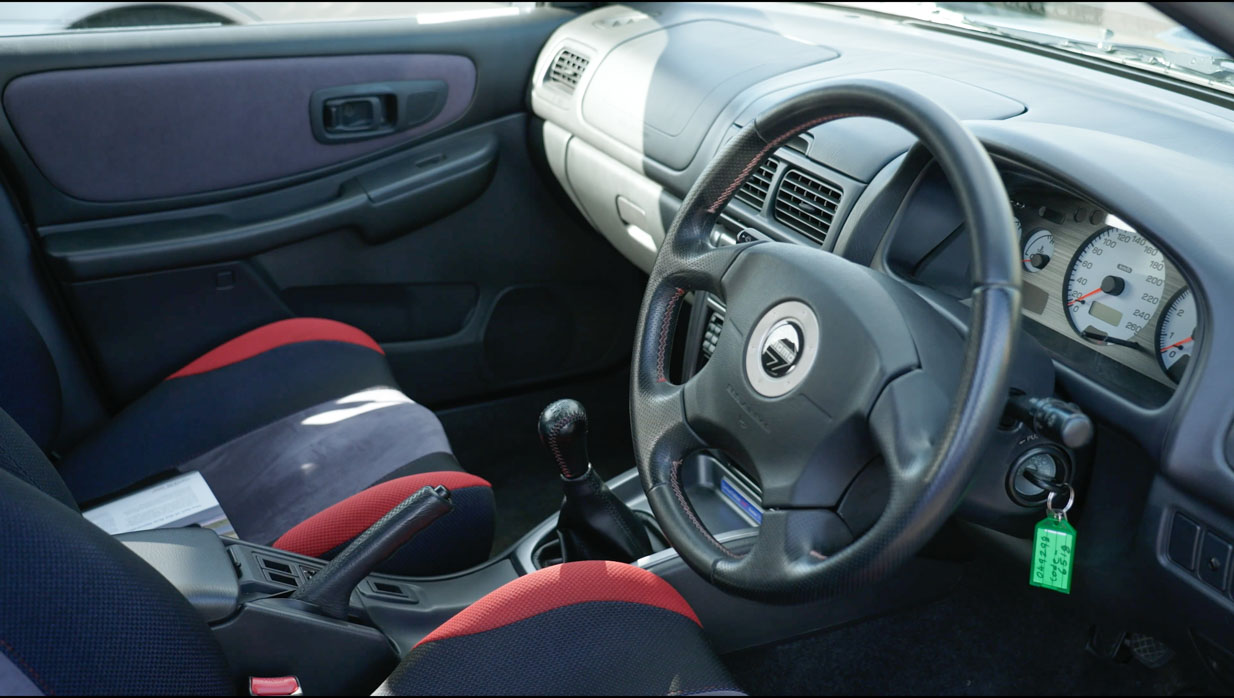
It’s also incredible how much more room is found inside the vehicle with such a small footprint, though modern safety advances are undoubtedly worth the sacrifice.
The grey seats are trimmed in some odd-feeling combination fabric material and the seat itself feels a bit like it was carved out of foam with a small axe – a far cry from the firm, thick-bolstered pews found in WRXs today.
Hill parked and in convoy with other classic and very expensive WRXs, I was fairly liberal with the throttle on take off, but the clutch bite point was friendly and the gear shift follow through to second was straight down and arrived with a satisfying thunk.
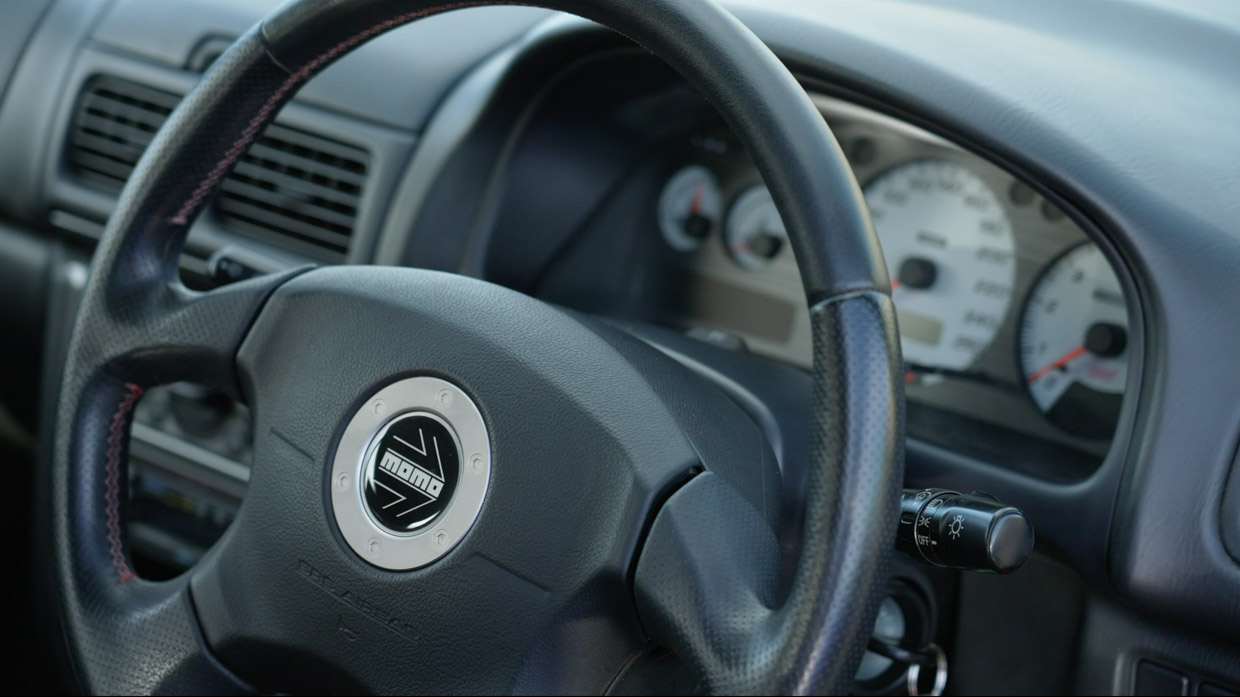
Passing down through the main straight and into the first fast bend, the WRX STI turned in and rolled through decisively, with a quick dab of the brake and the charming chirp of a blow-off valve prompting my first smile.
Somehow, without the guidance of a live torque-distribution chart sprawled across a 27-inch touchscreen, I made it through to the other side of the corner, and yet I can feel exactly what the car is doing. I’d have to check for a USB port in my backside later on.
I found myself honestly shocked at how smooth and precise my gear changes are in the short-throw five-speed box – it was so short I actually had to double-check I was in third before I could confidently release the clutch.
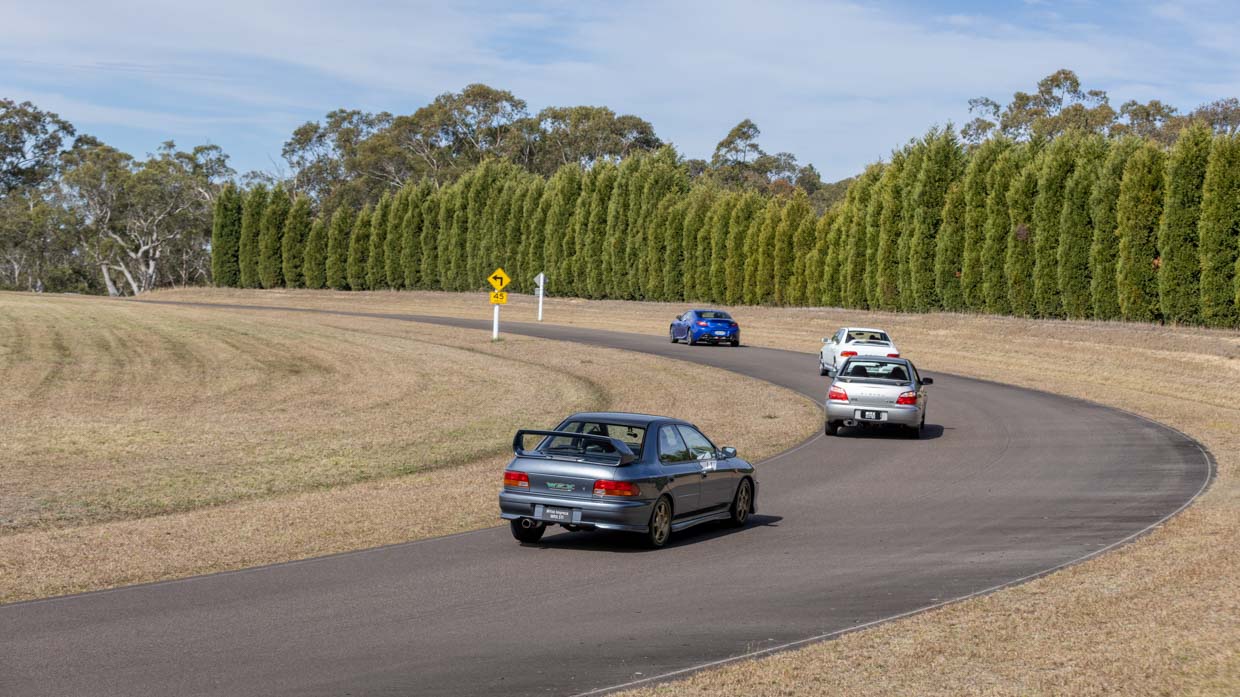
It’s confusing to me that modern manual transmissions found in the Nissan Z or even Subaru’s new BRZ and WRX aren’t this good, when the benchmark for solid shifter feel was nailed this long ago. Though Honda is still on the ball with its latest Civic Type R.
The nimble nature of the WRX STI emerged as the corners got tighter though, it’s easy to forget that the tyres equipped on cars today are a touch more grippy than what rolled out of the showroom back in the day.
Back when this 2.0L flat-four was new, the 206kW power peak came in at 6500 while the 353Nm torque peak arrived up at 4000rpm – more grunt than the 202kW/350Nm 2023 WRX and not all that far off a 235kW/400Nm Volkswagen Golf R.
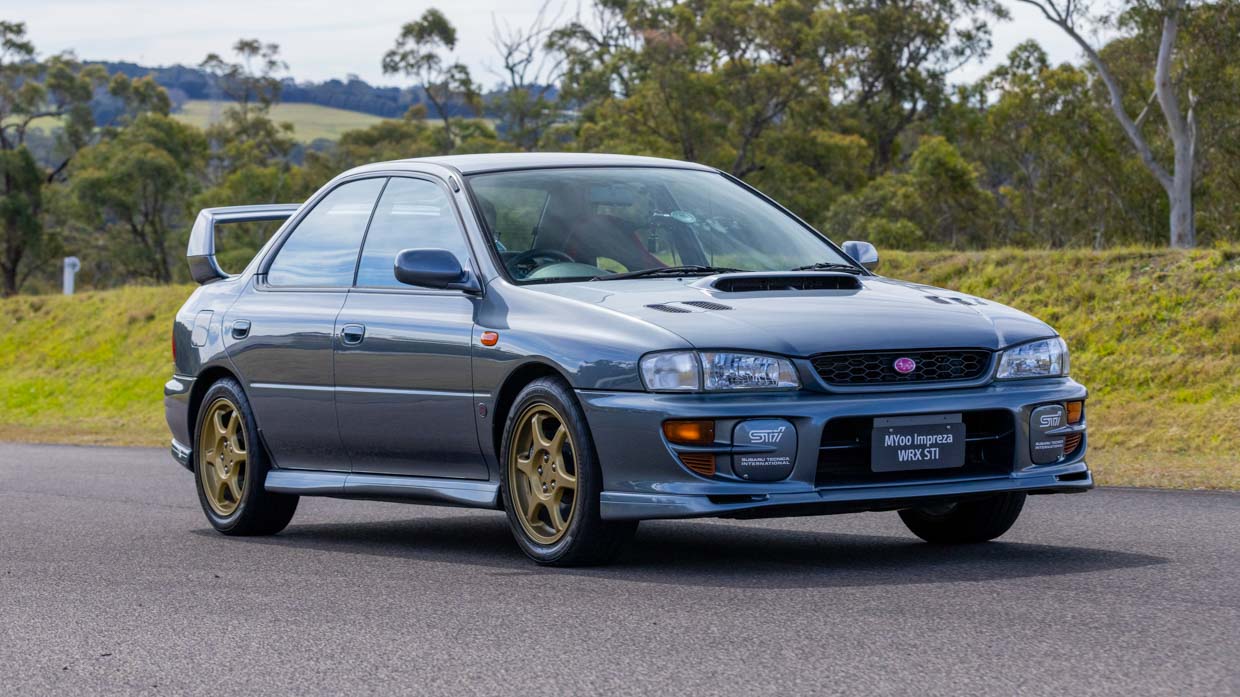
Legend has it that, back in the 1990s, many Aussies first discovered WRX pace by dumping clutches with the engine bounced off the redline, lest the whole shebang bogged down off the mark. It wasn’t unusual for the fairly fragile split-case five-speed manuals to explode before many Subes made it too far down the dragstrip…
I can’t imagine too much of that power has been lost over the years either because the WRX STI I’m in feels fast. It stops hard, rotates without hesitation and launches itself out of a corner like a startled horse.
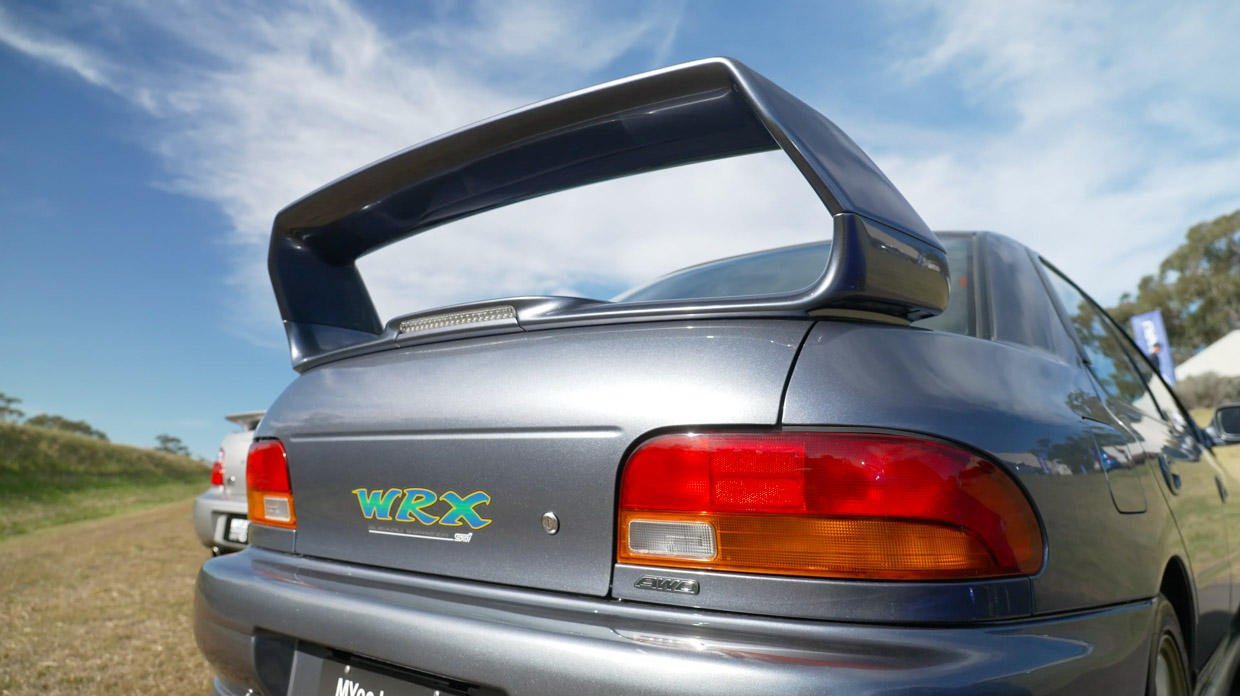
It feels fast – as in, new car fast – and although a slew of incremental changes would likely add up to quite a few seconds around a lap, it’s hard to imagine it would be all that much slower than something like a Toyota GR Yaris in the right hands.
It’s a very effective, if blunt tool.
Before it was retired I had a quick opportunity to sample a white WRX of this same generation and the difference between the two was immediate; the STI is a bare-knuckle punch to the regular WRX’s friendly gloved-up practice jabs. The STI is more exciting, if you can handle it.
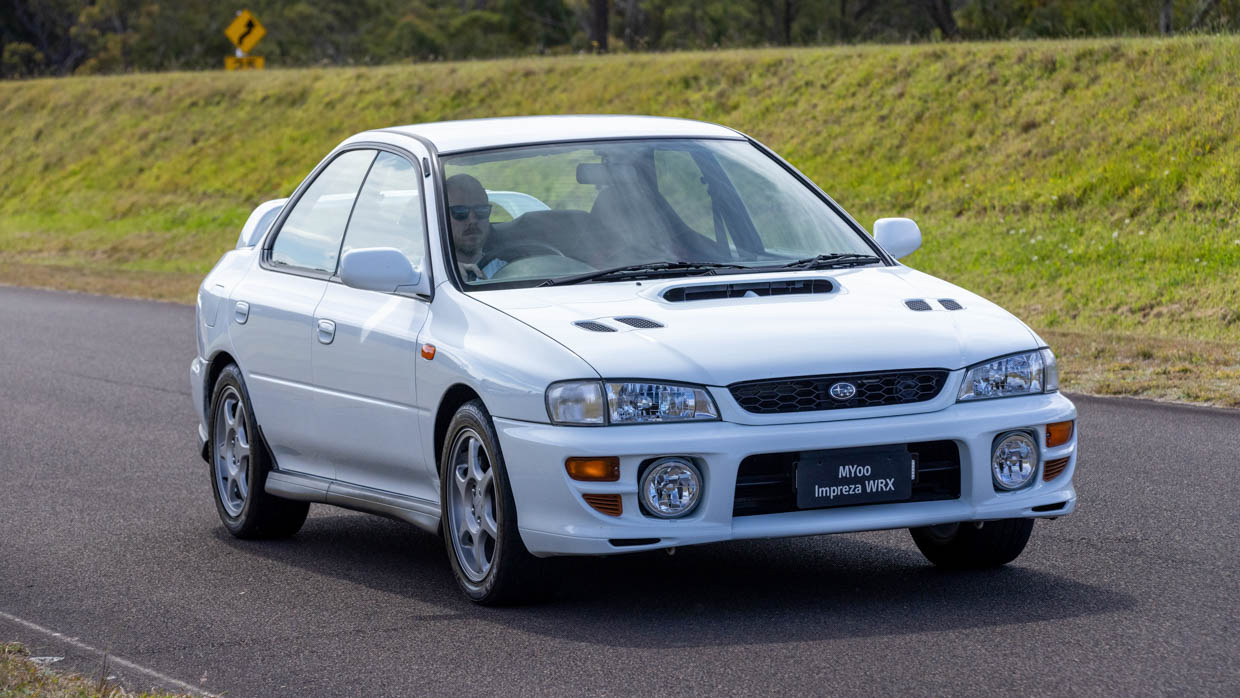
However, it’s easy to see why Subaru has offered the WRX and STI side-by-side for many years, as the former offers a level of compliance and ease of driveability that make for a much nicer everyday proposition.
As I made my way through other classic WRXs across the day, including the 2005 ‘blob eye’ WRX, the 2021 WRX STI and indeed the latest-generation WRX, it’s easy to trace the spirit of the first generation up through the ranks.
We can’t forget just how much we demand of cars nowadays in comparison to back in 2000 and the sheer savagery of the MY21 STI and the oversteering tendencies of the new BRZ shows that Subaru still has a loyal string of deviants in the engineering department.
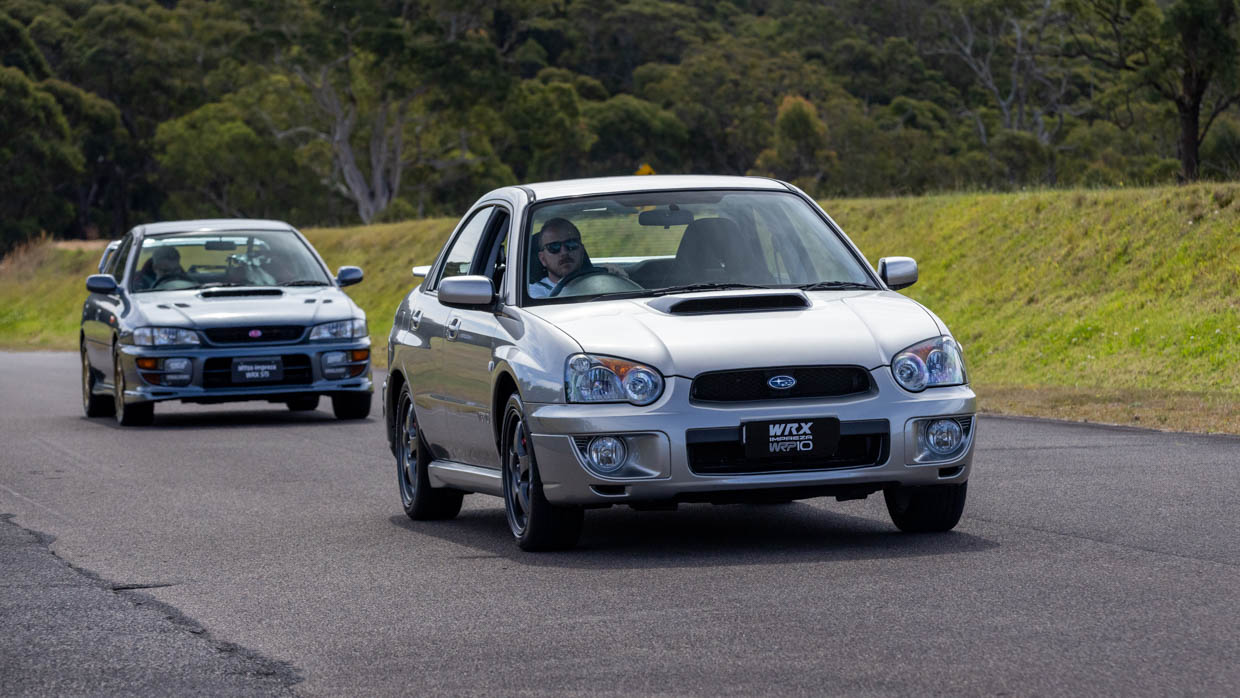
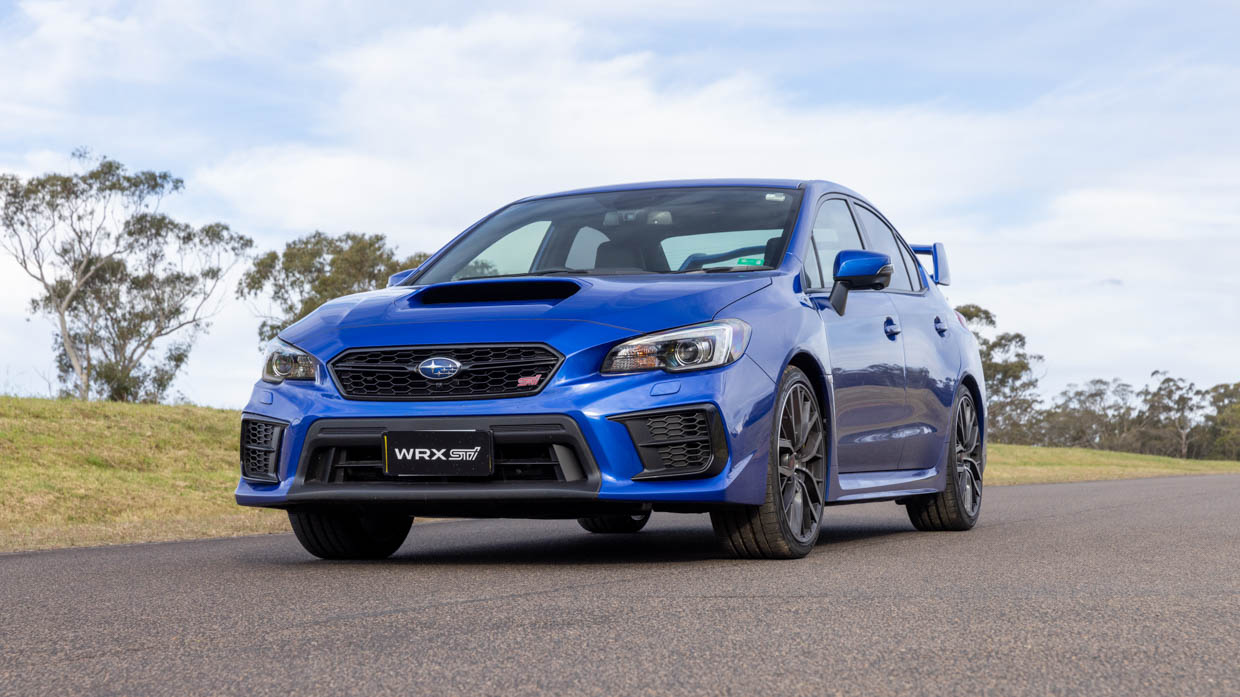
Still, there is much that can be learned from this first-generation vehicle, from its distraction-free interior and ample analogue feedback through to its characterful thunks, squeaks and other mechanical noises that still make the STI feel like an event at 20km/h.
Importantly, old performance Subarus were and still are a direct and mechanical experience. There’s a purity to them that became diluted by a succession of more rubbery and vaguer feeling successors.
In my previous reviews of Subaru’s family cars, such as the Forester and Outback long-termer, I’ve praised the softly-sprung and calming driving demeanour that makes them such terrific commuter cars. On this front, they only seem to have improved.
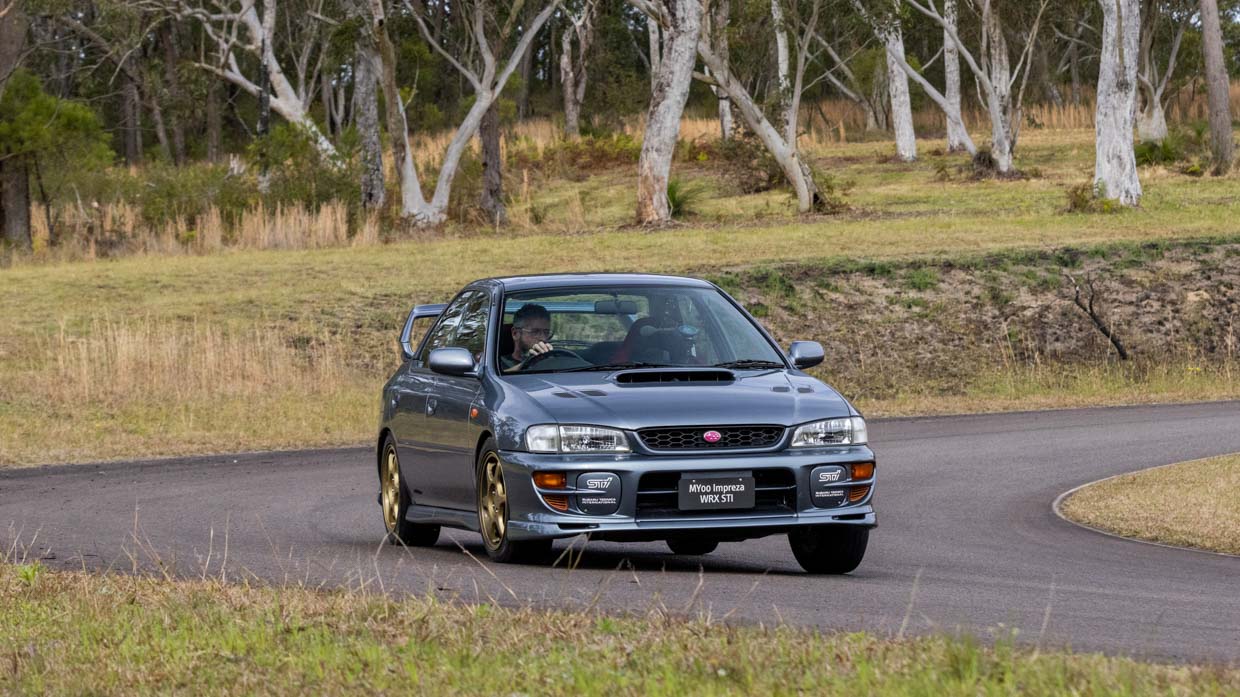
After spending the day driving through the WRX’s history the lukewarm reception to the current-generation WRX feels perhaps a touch unfair given its role as a softer, everyday performance car, but it’s undoubtedly without some merit, some edginess is still needed.
Last year, Subaru announced the saddening news that it was delaying the return of the STI until further notice as it looked to funnel resources into its future EVs, though promised the badge would later return to the WRX but only with at least some degree of electrification.
Perhaps more than anything, my drive in the first WRX STI has proved that even today, Subaru needs its hero at the top of the tree. We hope it returns, and soon.
About Chasing cars
Chasing Cars reviews are 100% independent.
Because we are powered by Budget Direct Insurance, we don’t receive advertising or sales revenue from car manufacturers.
We’re truly independent – giving you Australia’s best car reviews.
The estimate provided does not take into account your personal circumstances but is intended to give a general indication of the cost of insurance, in order to obtain a complete quote, please visit www.budgetdirect.com.au. Estimate includes 15%^ online discount.
^Conditions Apply
Budget Direct Insurance arranged by Auto & General Services Pty Ltd ACN 003 617 909(AGS) AFSL 241 411, for and on behalf of the insurer, Auto & General Insurance Company Limited(ABN 42 111 586 353, AFSL 285 571).Because we don’t know your financial needs, we can’t advise you if this insurance will suit you. You should consider your needs and the Product Disclosure Statement before making a decision to buy insurance. Terms and conditions apply.
Indicative quote based on assumptions including postcode , 40 year old male with no offences, licence suspensions or claims in the last 5 years, a NCD Rating 1 and no younger drivers listed. White car, driven up to 10,000kms a year, unfinanced, with no modifications, factory options and/or non-standard accessories, private use only and garaged at night.
^Online Discounts Terms & Conditions
1. Discounts apply to the premium paid for a new Budget Direct Gold Comprehensive Car Insurance, Third Party Property Only or Third Party Property, Fire & Theft Insurance policy initiated online on or after 29 March 2017. Discounts do not apply to optional Roadside Assistance.
2. Discounts do not apply to any renewal offer of insurance.
3. Discounts only apply to the insurance portion of the premium. Discounts are applied before government charges, taxes, levies and fees, including instalment processing fees (as applicable). The full extent of discounts may therefore be impacted.
4. We reserve the right to change the offer without notice.